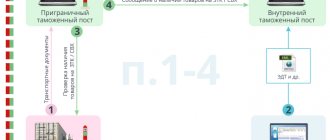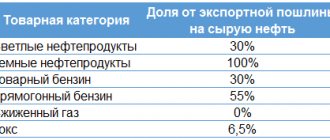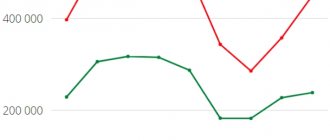Russia and Belgium, on the sidelines of the plenary session of the Kimberley Process (KP) in Moscow, signed the first agreement on the digitalization of information related to the certification of diamond products. Now documents about “blood” gems will be available on electronic media. The transition to a new level of relations with the representative of the European Union will allow Russia to accelerate the trade turnover of diamond products between business partners.
This will be possible due to the prompt receipt of statistical data on the import and export of diamonds and the automation of the data processing process. Launching a global transition to the digital exchange of CP certificates is one of the priorities of the Russian Chairmanship in 2021. understood what role the translation of certificates into electronic format will play in the development of the Kimberley Process.
Wounds of "bloody" stones
“Conflict” or, as they are also called, “blood” diamonds at the beginning of this century became a big problem for African countries and a threat to all humanity. Funds from the sale of illegally mined gemstones were used to finance terrorism and anti-government armed conflicts. It was because of diamonds that civil war continued for many years in Angola, which gained independence in 1975. And in 2000, the UN condemned Liberian President Charles Taylor, who supported rebel movements in neighboring Sierra Leone with arms supplies and trade in exchange for precious stones.
However, the international community paid special attention to the problem of “bloody” stones on the market only after the terrorist attack of September 11, 2001. According to numerous reports, the activities of banned terrorist groups, including the Taliban (banned in the Russian Federation), which seized power in Afghanistan, were financed through the illegal mining of precious stones.
Realizing that such a smuggling scheme is developing more and more every year, representatives of diamond mining and trading countries held their first meeting in Kimberley (South Africa) in 2000 to develop a mechanism to combat the problem. Thus, in 2003, it was decided to create a process named after this African city and directly supported by the UN.
The main goal of the alliance is to prevent conflict diamonds from entering the international market and, accordingly, to prevent money from being made from illegal mining of stones. Membership in the Kimberley Process gives countries the ability to legally sell them. In this issue, the development of a certification scheme confirming the extraction of diamonds outside the conflict zone plays a key role. For this purpose, each country has an authorized body that inspects stones.
At the plenary session of the organization's member countries in Moscow, the issue of three new states joining the alliance - Mozambique, Qatar and the Republic of Kyrgyzstan - was discussed. Today the union includes 56 participants and 4 observers, who are also manufacturers and importers of precious stones. From among them, a chairman and vice-chairman are elected annually. This year, these powers belonged to the Russian side, which last held this post in 2005. The next country to follow will be Botswana.
Operating procedure [edit]
The working procedure of the KPCS is carried out by the chairman, elected annually at the plenary meeting. The monitoring working group works to ensure that each participant implements the scheme correctly. The working group reports to the Chairman. Other working groups include a technical working group (or diamond expert working group), which reports implementation challenges and propose solutions, and a statistical working group, which reports diamond trade data.
While the Process is widely welcomed by groups seeking to improve human rights in countries previously affected by conflict diamonds, such as Angola, some say it does not go far enough. For example, Amnesty International states: “[We] welcome the Kimberley Process as an important step in addressing the issue of conflict diamonds. But until the diamond trade is subject to mandatory and impartial monitoring, there will still be no effective guarantee that all conflict diamonds will be identified and removed from the market." Canadian aid group One Sky (partially funded by the Canadian government) agrees with Amnesty's view, stating: "If implemented effectively, the Kimberley Process will prevent diamonds from being used to finance wars and atrocities... However, without a system of peer-reviewed, independent and periodic reviews in all countries, the overall process remains open to abuse." The founder of the Fatal Transactions campaign (started in 1998), Anne Yeung, criticized the KPCS in 2008 for not being a legally binding agreement and suggested that the scheme be reconsidered. [16]
Another form of criticism from the African Diamond Council (ADC) is whether the Kimberley Process can truly be enforced. There are many factors that can jeopardize the "official status of certificates and documents" [17] [18] from lack of local enforcement to secrecy in diamond trading centers such as Antwerp. Human Rights Watch also found that there is little independent monitoring of compliance with the Kimberley Process and few penalties for violations. [6]
Working groups [edit]
KPCS has established a number of working groups to carry out its programs. As of 2021, it had 7 working groups: Working Group of Diamond Experts (WGDE), Working Group on Monitoring (WGM), Working Group on Statistics (WGS), Working Group on Artisanal and Alluvial Mining (WGAAP), Committee on Participation and Chairmanship (CPC), Committee on Rules and Procedures (CRP) and Ad Hoc Committee on Reform and Review (AHCRR). [19]
Certificates of the XXI century
The digitalization of KP certificates began precisely in the year of Russia’s chairmanship, which is the world leader in promoting electronic document management in the field of diamond trade. This task became the main one during Moscow's chairmanship. According to the Deputy Minister of Finance of Russia and Chairman of the Committee for Strategy and Sustainable Development under the Supervisory Board of AK ALROSA, Aleksey Moiseev, all observed processes are necessary for the complete abandonment of paper media and the transition to electronic format. However, in his opinion, today there are a number of problems that delay the resolution of this issue.
There are a number of states that are not so advanced in terms of digital development, some of them are currently not ready for this step at all. However, today we are trying to encourage them to start investing in these processes. Will be working. I believe that the complete transition of all countries will not be carried out soon. However, today we have provided a single internationally recognizable format using the Belgian scheme as an example. I think the two largest world centers will set the tone for everyone else ,” Moiseev emphasized.
He noted that today the exchange of certificates will be carried out in a bilateral format. A similar agreement has already been concluded with Belgium, a pilot project has been launched with Belarus, and documents are expected to be signed with India, Armenia, and Kyrgyzstan.
The transition to digital exchange of CP certificates, which are currently issued on paper, will simplify and speed up the procedures for issuing them. In addition, digital documents are a guarantee of the legitimacy of each shipment of diamonds sent. Russia has always advocated promoting the principles of openness in the global diamond trade ,” Moiseev said.
pixabay.com
Current membership[edit]
As of 1 July 2013, the KPCS had 54 members representing 81 countries, with the European Union counting as one member. All major producing, exporting and importing countries of rough diamonds participate in it. [20] Cameroon, Kazakhstan, Panama and Cambodia were admitted as participants in 2012. Below is a list of participating countries, with their year of entry (and, where appropriate, re-entry) in parentheses.
- Angola (2003)
- Armenia (2003)
- Australia (2003)
- Bangladesh (2006)
- Belarus (2003)
- Botswana (2003)
- Brazil (2003)
- Cambodia (2012)
- Cameroon (2012)
- Canada (2003)
- Central African Republic (2003)
- China (2003)
- Democratic Republic of the Congo (2003)
- Cote d'Ivoire (2003)
- European Union (2003)
- Eswatini (2011)
- Gabon (2018)
- Ghana (2003)
- Guinea (2003)
- Guyana (2003)
- India (2003)
- Indonesia (2005)
- Israel (2003)
- Japan (2003)
- Kazakhstan (2012)
- Laos (2003)
- Lebanon (2003/2005)
- Lesotho (2003)
- Liberia (2007)
- Malaysia (2003)
- Mali (2013)
- Mauritius (2003)
- Mexico (2008)
- Namibia (2003)
- New Zealand (2006)
- Norway (2003)
- Panama (2012)
- Republic of the Congo (2003/2007)
- Russia (2003)
- Sierra Leone (2003)
- Singapore (2004)
- South Africa (2003)
- South Korea (2003)
- Sri Lanka (2003)
- Switzerland (2003)
- Tanzania (2003)
- Thailand (2003)
- Togo (2003)
- Türkiye (2007)
- Ukraine (2003)
- United Arab Emirates (2003)
- United Kingdom (2021)
- {US (2003)
- Venezuela (2003, withdrew 2008, readmitted 2016)[21][22]
- Vietnam (2003)
- Zimbabwe (2003)
Candidates[edit]
| This section requires additional links for verification . |
The following countries have expressed interest in joining the KPCS but have not yet met the minimum requirements:
- Burkina Faso
- Chile
- Kenya
- Kyrgyzstan
- Mauritania
- Mozambique
- Qatar
- Uzbekistan
- Zambia
Refusal[edit]
The World Trade Organization (WTO) approved a waiver for the SSCPA in December 2006, recognizing the importance and effectiveness of the SSCPA. [23]
Statistics[edit]
KPCS places particular emphasis on the collection and publication of data relating to actual diamond production and international diamond trade. Member countries are required to officially report statistical data that can be verified through auditing. [30] In addition, all member countries are required to compile and submit an annual report on diamond trade. [31] According to the KPCS Working Group on Statistics (WGS), in 2006 the KPCS controlled $35.7 billion worth of rough diamond exports, representing more than 480 million carats. The number of certificates issued by KCCP members was 55,000.
In 2014, 100 Reporters published an article showing how the use of KP certificates allowed the publication to uncover transfer pricing manipulation in the South African trade in exported rough diamonds [32], detailing: “Most imported diamonds appear to be re-exported uncut and unprocessed. Although imports amount to a relatively small volume, or carats, they dramatically increase the cost of exporting rough diamonds. If the value and volume of imported diamonds stated in South Africa's KP certificates are subtracted from the corresponding exports, the actual price per carat of rough diamonds is the first time exports fall sharply."
The article revealed that when "asked about anomalies in the reported Kimberley Process (KP) diamond trade data in South Africa, where De Beers is a dominant player, [Lynette] Gould [De Beers' head of media relations] responded: “The main purpose of the KP process (or at least the issuance of certificates) is for governments to certify the origin of diamonds, not to track the volume and value of diamonds imported or exported.” [32]
Annual report[edit]
| This section needs expansion . |
The annual report of all KPCS members is an integral part of the peer review mechanism established by the KPCS. In the United States, for example, all companies that buy, sell and ship rough diamonds must submit an annual report via email to the State Department by April 1. [33] The report [34] must include company contact information and a detailed breakdown of the total carat weight and US dollar value of rough diamonds imported, exported and stockpiled (still in inventory) for the previous calendar year. They are also sorted by HTS codes for ungraded (gem and industrial) rough diamonds, graded industrial rough diamonds and graded gemstone rough diamonds, the latter of which are more likely to be processed into finished stones and jewelry for retail sale, whereas industrial Diamonds are most likely to be used in cutting and drilling tools. Failure to timely file this annual report may result in a fine of up to $10,000. If found to have committed a willful violation, the person convicted could be fined up to $50,000 and sentenced to up to ten years in prison. [35]
Global Witness[edit]
Global Witness is a London-based NGO, a key element of the SSCPA and was one of the first organizations to bring the issue of "conflict diamonds" to international attention. [43] They claim that the report they wrote, "Rough Deal," partially inspired the film Blood Diamond.
. [44]
According to Global Witness, the Kimberley Process ultimately failed to stop the flow of conflict diamonds, forcing them to abandon the scheme in 2011 [45].
Links[edit]
- "Official Kimberley Process website". Kimberleyprocess.com
. Retrieved January 2, 2021. - "Why we are leaving the Kimberley Process - a message from Global Witness Founding Director Charmian Gooch". Global Witness. 2011-12-05. Retrieved December 6, 2011.
- "2021 Plenary - IMPACT Statement". Kimberley Process Certification Scheme. December 14, 2021. Retrieved January 12, 2021.
- ↑
Sanderson, Henry (22 March 2021).
"Ethical concerns grow over Kimberley Process diamond charter". Financial Times
. Retrieved January 12, 2021. - ↑
Lewis, Barbara (June 18, 2021). "CAR struggles to restart diamond exports, tax revenue lags". Reuters. Retrieved January 12, 2021. - ^ ab "Human Rights Watch Statement on the Kimberley Process". Human Rights Watch
. 2016-06-06. Retrieved September 28, 2021. - Robert Fowler (2000-03-10). "Final Report of the UN Panel of Experts (Fowler Report)". Global Policy Forum. Retrieved 2010-03-20.
- "Sanctions in Angola". Global Policy Forum. Retrieved March 21, 2010.
- United Nations Security Council Verbotim Report 3891
.
S/PV/3891 pp. 4. Mr. Amorim, Brazil,
June 12, 1998. Retrieved August 28, 2008. - Rihanna
Armstrong, Paul (August 6, 2010). "Q&A: Africa's 'Bloody' Diamond Shame". CNN International. Retrieved January 12, 2019. - ↑
Berg, Goya (December 31, 2021).
"Dangerous Diamonds Warning!" . diamondspeacearmy.com
. Retrieved January 12, 2021. - Session 55 of the United Nations General Assembly Verbotim Report 79
.
A/55/PV.79 p. 2. Mr. Holbrooke, USA,
December 1, 2000. Retrieved August 28, 2008. - Resolution 56
of the 55th session of the United Nations General Assembly. The Role of Diamonds in Fueling Conflict: Breaking the Link between the Illicit Trade in Rough Diamonds and Armed Conflict as a Contribution to Conflict Prevention and Resolution A/RES/55/56 December 1, 2000 Retrieved August 28, 2008 - Meeting
General Assembly Adopts Resolution to Harmonize Efforts to End Illegal Diamond Trade, Achieving the 2030 Agenda for Sustainable Development GA/12002 March 7, 2018 Accessed January 12, 2021 [dead
link
] - ↑
Ambler, Pamela (September 10, 2021).
"Diamonds are the latest industry to benefit from blockchain technology". Forbes
. Retrieved January 12, 2021. - Jung, Anne (2008). "ENTRY: 10 YEARS OF MILITARY OPERATIONS" (PDF). Medico International. Retrieved January 12, 2021.
- "Reporter discusses the dark side of diamonds". National Geographic
. Retrieved March 10, 2015. - Richard Hughes. "Kimberley Process - Appeasement of the Diamond Trade". ruby-sapphire.com
. Retrieved March 10, 2015. - "Working groups and committees". kimberleyprocess.com
. Retrieved January 12, 2021. - "Working together to stem the tide of conflict diamonds around the world". kimberleyprocess.com
. 2021. Retrieved January 12, 2021. - ↑
El Dahan, Maha (24 May 2021). "Venezuela to join global group to combat conflict diamonds". Reuters. Retrieved January 12, 2021. - "Final Communiqué - Kimberley Process Plenary" (PDF). US State Department. November 17, 2016 Archived from the original (PDF) on January 13, 2021. Retrieved January 12, 2021.
- "Commodities Council considers new EU enlargement, extends Kimberley waiver". World Trade organisation . November 20, 2006. Retrieved January 12, 2021.
- "Chair" . KimberleyProcess. Retrieved March 10, 2015.
- "Diamond activist misses meeting - Inside Israel - News - Arutz Sheva". Israelnationalnews.com. 2010-06-18. Retrieved March 10, 2015.
- [1] Archived January 24, 2011, at the Wayback Machine.
- "World Diamond Council". worlddiamondcouncil.org
. Retrieved March 10, 2015. - "Assistant Secretary Fernandez nominates Kimberley Process chairman". US State Department
. Retrieved March 10, 2015. - [2] Archived December 25, 2010 at the Wayback Machine.
- "Kimberley Process - Rough Diamond Statistics". Kimberleyprocessstatistics.org
. Retrieved March 10, 2015. - "Jewelers' Vigilance Committee". jvclegal.org
. Retrieved March 10, 2015. - ^ a b Khadija Sharife. "Rough diamonds: South Africa fails in diamond trade". 100 reporters
. Retrieved March 10, 2015. - "Kimberley Process for Rough Diamonds" (PDF). State.gov. Retrieved March 10, 2015.
- "USKPA Annual Import/Export Report" (PDF). jvclegal.org. Retrieved March 10, 2015.
- "Office of Foreign Assets Control, Treasury" (PDF). edocket.access.gpo.gov. Retrieved March 10, 2015.
- ↑
[3] Archived November 23, 2010, at the Wayback Machine. - "Hot Chocolate: How Cocoa Is Fueling Conflict in Ivory Coast" (PDF). Globalwitness.org. Retrieved March 10, 2015.
- ↑
[4] Archived November 23, 2010, at the Wayback Machine. - ↑
[5] Archived November 23, 2010, at the Wayback Machine. - ↑
[6] Archived November 23, 2010, at the Wayback Machine. - ↑
[7] Archived November 23, 2010, at the Wayback Machine. - ↑
[8] Archived March 14, 2008, at the Wayback Machine. - Design by Mark Boulton. "Global Witness". Globalwitness.org
. Retrieved March 10, 2015. - "Conflict Diamonds". Globalwitness.org
. Retrieved March 10, 2015. - "NGO Global Witness leaves diamond verification scheme". BBC News. December 5, 2011. Retrieved March 10, 2015.
- ^ ab "The Kimberley Wrongful Trial - World Policy Institute". worldpolicy.org
. Retrieved March 10, 2015. - Khadija Sharife. "Made in China: The secret to Mugabe's electoral success". 100 reporters
. Retrieved March 10, 2015. - ^ ab "PAC", African Partner, Canada.
- ^ ab "IRIN Africa - GLOBAL: Kimberley Process credibility is at stake, NGOs say - Angola - Namibia - Conflict - Economy - Governance". IRINnews
. Retrieved March 10, 2015. - Farai Mutsaka in Harare, Zimbabwe, Peter Wonacott in Johannesburg and Sarah Childress in Nairobi, Kenya (28 May 2010). "Zimbabwe closes in on permission to export Marange diamonds - WSJ". WSJ
. Retrieved March 10, 2015.CS1 maint: multiple names: authors list (link) - "Zimbabwe Meets Diamond Trade Standards: Monitor". reuters.com
. Retrieved March 10, 2015. - "Militarized Control of Diamonds and Power in Zimbabwe" (PDF). Canada's African partner. June 14, 2010 Archived from the original (PDF) on September 24, 2015. Retrieved March 10, 2015.
- "BBC News - Diamonds: Is the Kimberley Process Working?" . BBC News
. Retrieved March 10, 2015. - "Militarized Control of Diamonds and Power in Zimbabwe" (PDF). Canada's African partner. June 14, 2010 Archived from the original (PDF) on September 24, 2015. Retrieved March 10, 2015.
- "Diamond Boss Blows Up KP". Zimeye.org
. Archived from the original on 2015-09-09. Retrieved March 10, 2015. - "Diamond Boss Blows Up KP". Zimbabwean
. Archived from the original on 2013-05-01. Retrieved March 10, 2015. - "YouTube". Youtube.com
. Retrieved March 10, 2015. - "Kimberley Process: Winners and Losers from Two-Year-Old Zimbroglio". JCK Magazine
. Archived from the original on 2015-02-09. Retrieved March 10, 2015. - "Why Zimbabwe's new diamonds threaten global trade". Time
. December 5, 2010. Retrieved March 10, 2015. - "MP3 File" (PDF). Downloads.bbc.co.uk. Retrieved March 10, 2015.
- "Markets - BDlive". Working day live
. Retrieved March 10, 2015. - Jump up
↑ Gina-Marie Cheeseman (December 7, 2011).
"Global Witness says Kimberley Process does not prevent blood diamonds". Triple Expert: People, Planet, Profit
. Retrieved March 10, 2015.






